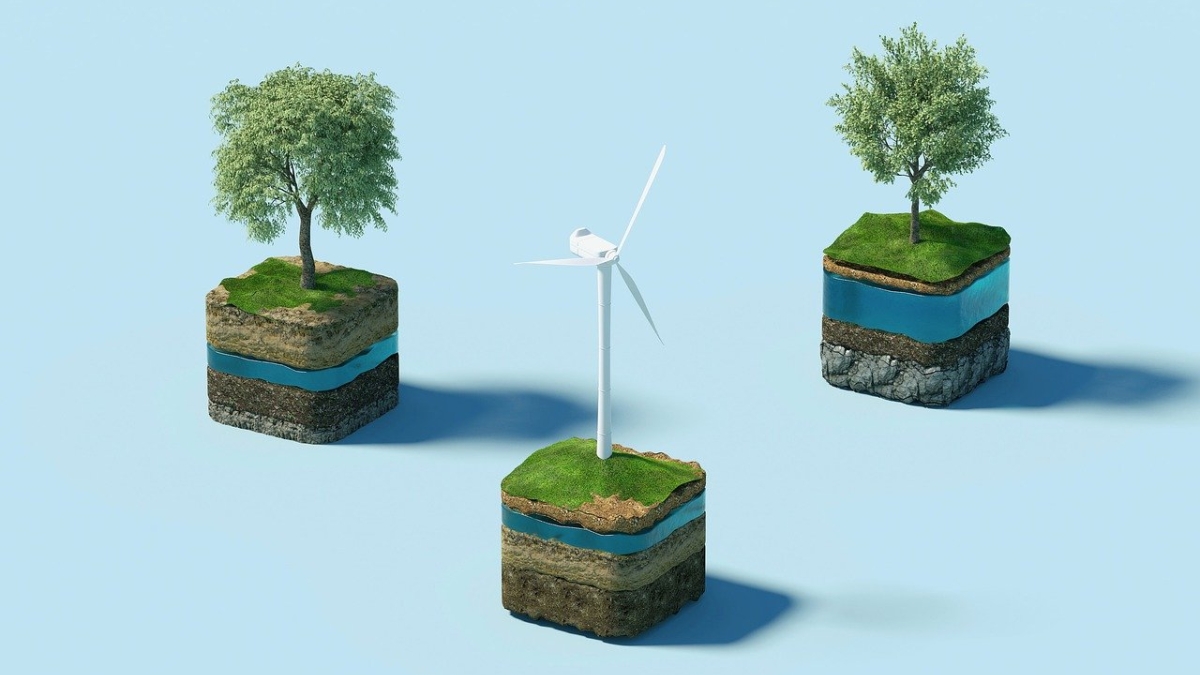When Arizona State University President Michael Crow committed the campus to sustainability in 2007, he pledged that it would be carbon neutral by 2025.
This spring, ASU announced that it had hit that goal six years ahead of schedule — on June 30, 2019 — during a period when the university increased building space by 40% and on-campus enrollment by more than 20%.
It also capped a year when ASU reached new heights in sustainability rankings of all stripes.
All that was celebrated Oct. 14 at ASU’s annual State of Sustainability meeting.
“This is really about making sure we’re walking the talk,” said Morgan Olsen, ASU executive vice president, treasurer and chief financial officer.
ASU ranked top in the U.S. and fifth in the world out of 766 institutions in achieving the United Nations Sustainable Development Goals.
“We really feel great about that as well,” Olsen said. “It's a testament to the efforts that people are making all the way across the university.”
In the annual rankings published by Times Higher Education magazine, ASU scored the top spot for Sustainable Development Goals impact, earning 96.3 out of 100 points, ahead of University of North Carolina at Chapel Hill and Penn State.
With 90 solar systems installed on campuses, ASU is ranked second on green power by the Environmental Protection Agency.
And this year Sierra magazine’s Coolest Schools rankings landed ASU in the top 10 at No. 4.
“In this case it takes the whole university,” Olsen said, pointing to Mick Dalrymple, director of University Sustainability Practices, and his team.
“They’ve done a fantastic job” working across the whole university, Olsen said.
In the Association for the Advancement of Sustainability in Higher Education’s Sustainability Tracking, Assessment and Rating System — a transparent, self-reporting framework for colleges and universities to measure their sustainability performance — ASU is the only institution with a platinum rating on the newest version.
“Sustainability is an ongoing journey,” said Nichol Luoma, University Sustainability operations officer and vice president of University Business Services.
“We will embrace sustainability opportunities at every turn.”
ASU’s rankings “reflect a tremendous culture of teamwork across disciplines and departments,” she said.
Olsen also applauded the university’s facilities development and management staff.
“Those folks are responsible for the built environment,” he said. “You know we have over 25 million square feet of built environment at ASU across the four campuses and now around the world that they have to worry about and maintain this great living, learning, and sometimes even play environment for all of us. This is where we work, this is where we study, and they have to make sure that that supports both operations at a very, very high level so their efforts are greatly appreciated.”
Crow said students need to see that a sustainable world is possible.
“We have one of the most sustainable campuses in the world,” Crow said. “It’s been a long time coming. … Why do we care about being sustainable? Because that’s the world we have to go to.”
How to get involved
Learn about ways you can practice sustainability at ASU on the Global Institute of Sustainability and Innovation's roundup page and on Business and Finance's personal actions page.
Top image by RoadLight from Pixabay
More Environment and sustainability

Rethinking Water West conference explores sustainable solutions
How do you secure a future with clean, affordable water for fast-growing populations in places that are contending with unending drought, rising heat and a lot of outdated water supply infrastructure…
Meet the young students who designed an ocean-cleaning robot
A classroom in the middle of the Sonoran Desert might be the last place you’d expect to find ocean research — but that’s exactly what’s happening at Harvest Preparatory Academy in Yuma, Arizona.…

From ASU to the Amazon: Student bridges communities with solar canoe project
While Elizabeth Swanson Andi’s peers were lining up to collect their diplomas at the fall 2018 graduation ceremony at Arizona State University, she was on a plane headed to the Amazon rainforest in…


